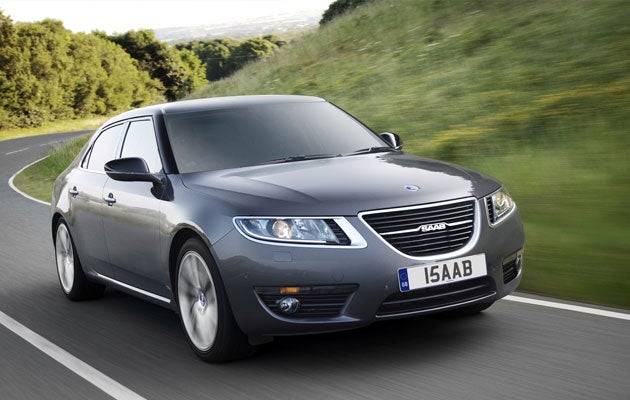GM signals the end for Saab

Your support helps us to tell the story
From reproductive rights to climate change to Big Tech, The Independent is on the ground when the story is developing. Whether it's investigating the financials of Elon Musk's pro-Trump PAC or producing our latest documentary, 'The A Word', which shines a light on the American women fighting for reproductive rights, we know how important it is to parse out the facts from the messaging.
At such a critical moment in US history, we need reporters on the ground. Your donation allows us to keep sending journalists to speak to both sides of the story.
The Independent is trusted by Americans across the entire political spectrum. And unlike many other quality news outlets, we choose not to lock Americans out of our reporting and analysis with paywalls. We believe quality journalism should be available to everyone, paid for by those who can afford it.
Your support makes all the difference.General Motors has apparently decided to wind down its Swedish Saab operation after failing to reach agreement to sell it to the Dutch sports-car manufacturer Spyker. GM has been trying to sell Saab for most of this year; previously, the plan was to sell it to a consortium headed by the Swedish super-car manufacturer Koenigsegg but that deal fell through last month.
Saab's car operations were originally part of the big Saab-Scania combine, which also manufactured trucks and aircraft, under the umbrella of the Wallenberg business empire. They came into the orbit of GM in December 1989, when the US group, apparently on the rebound from its failure to acquire Jaguar (which went to Ford), acquired an initial stake of 50 per cent in Saab Automobile AB, which was increased to 100 per cent in 2000.
From the start, GM and Saab struggled with the contradictory goals of producing distinctive Saabs that lived up to the Swedish company's history of innovative design, while at the same time sharing parts with GM's more humdrum Opels and Vauxhalls in order to reap economies of scale. While the resulting models were, to varying degrees, disappointing, they still retained some of the features for which Saabs had always been renowned, such as excellent seats, instrumentation and ergonomics.
The timing of Saab's possible demise is especially bitter. Since the company started making cars in the 1940s, there have only ever been about six distinct basic Saab model families, honed and developed over decades. But the repeated criticism that Saab was always short of new metal was about to be answered with a wave of new models – starting in the next few months with a handsome replacement for the big 9-5 saloon that had already been shown at the Frankfurt Motor Show. Now we may never know whether these new cars would have been better than previous GM-era Saabs, or whether they could have saved the company.
Join our commenting forum
Join thought-provoking conversations, follow other Independent readers and see their replies
Comments